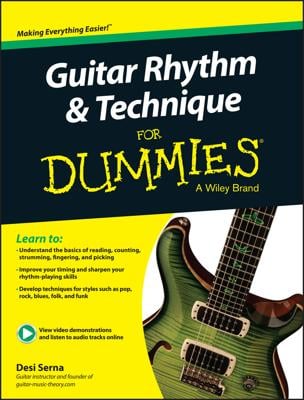Guitar Rhythm and Techniques For Dummies, Book + Online Video and Audio Instruction
Explore Book Buy On AmazonYou can use a number of different hammer-on techniques to add more variety to your guitar articulation. Each technique provides a slightly different feel to the way you play and connect your notes. Try combining them to give your playing a more stylized feel.
Double hammer-ons
The following figure shows a double hammer-on on the 3rd string. Play the open string and hammer the second fret with your first finger; then, while that note’s still ringing, hammer the string again at the fourth fret with your third finger, producing a super-smooth connection between all three notes.
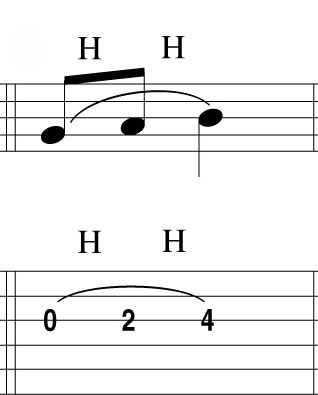
Try not to rush the notes together. It's an easy mistake when you first work with hammer-ons.
The following figure shows a double hammer-on on the same string using three fretted notes. This type of hammer-on is the most difficult to play and requires some practice. Play the note at the fourth fret, fretting with your first finger; hammer-on the fifth-fret note with your second finger; then hammer the seventh-fret-note with your fourth finger.
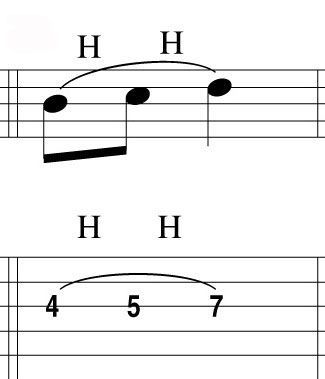
Double-stop hammer-ons
You can also play hammer-ons as double-stops. The most common double-stop hammer-ons — and the ones that are the easiest to play — are the ones where both double-stop notes lie on the same fret, enabling you to barre them (play them with one finger).
The a) portion of the following figure shows a double-stop hammer-on from open strings (the 2nd and 3rd). After striking the two open strings with the pick, and while the open strings are still ringing, slam down your first finger at the second-fret, across both strings at the same time.
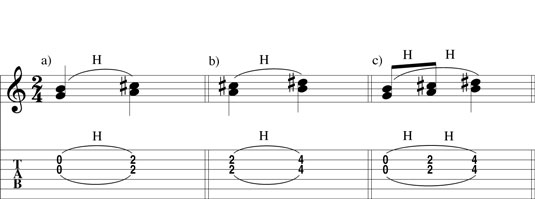
Next, try a double-stop hammer-on from the second fret to the fourth fret, also on the 2nd and 3rd strings, as shown in the b) portion of the figure. Use your first finger to barre the second fret and your third finger to barre the fourth fret. Now, to get really fancy, try a double double-stop hammer-on, on the same strings, as shown c). Start with the open strings; hammer the second-fret barre with your first finger; then hammer the fourth-fret barre with your third finger.
Hammer-on from nowhere
The following figure shows a "hammer-on from nowhere." Unlike a typical hammer-on, it doesn’t follow an already-ringing lower note. In fact, the hammered note is on an entirely different string than the previous note. Sound the hammered note by fretting it very hard (hammering it) with a left-hand finger — hard enough that the note rings out without your striking it with the pick.
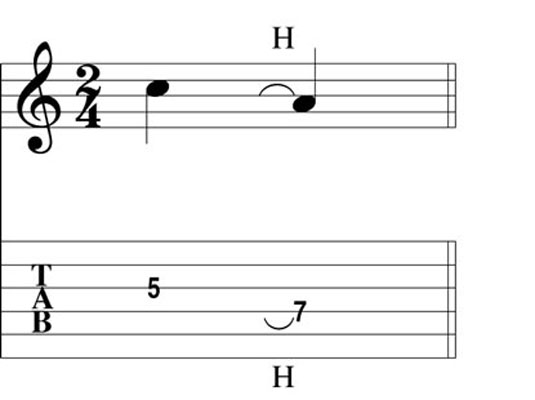
Why would you even use this type of hammer-on? Sometimes, in fast passages, your right-hand picking pattern just doesn’t give you time for that one extra pick attack when you need it. But you can sound the note anyway by fretting it hard enough with a finger of the left hand — hammering it from nowhere.

